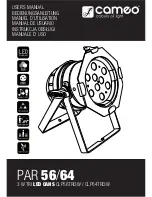
INSTALLATION & MAINTENANCE MANUAL
These instructions should be read carefully and retained after installation by the end user for future reference
and maintenance.
These instructions should be used to aid installation of the following products:
FLN10 / FLN20 / FLN30 / FLN50 / FLNMIC / FLNPIR
SAFETY
•
This product must be installed in accordance with the latest edition of the IEE Wiring Regulations
(BS7671) and current Building Regulations. If in any doubt, consult a qualified electrician
•
Please isolate mains prior to installation or maintenance
•
Check the total load on the circuit (including when this product is fitted) does not exceed the rating of
the circuit cable, fuse or circuit breaker
•
Please note the IP (Ingress Protection) rating of this product when deciding the location for installation
•
Do not overload this accessory or subject it to conditions outside its rating
•
The FLNxx fittings are Class I and must be earthed
•
This FLNMIC and FLNPIR accessories are Class II double insulated
•
This product series is IP65 rated
INSTALLATION
Note - Microwave sensors may not be suitable for all installations, for example enclosed spaces, as they are
able to detect movement through non-metallic surfaces like plasterboard and thin doors. Both sensors can be
falsely triggered by changes in temperature, therefore should not be installed near sources of heat such as
boiler flues.
•
Provide power to the required point of installation (refer to BS7671 for correct cabling methods).
Suitable IP rated junction boxes should be used where required
•
Round cable should be used for the mains supply, with an outer diameter of 7-9mm and a CSA of up
to 1.5mm
2
. The use of flat cable will cause water ingress to the fitting. A drip loop should be left on the
incoming cable
•
Using the bracket as a template, mark the location for, and drill the fixing holes ensuring not to infringe
with any gas / water pipes or electrical cables. This can be done without removing the bracket from the
fitting (see Fig. 1)
Fig. 1
•
Fix the luminaire to a suitable solid surface using the wall plugs and screws provided
•
Tilt so that the cable entry points are accessible
•
Unscrew the sealing nut from the compression gland (see Fig. 2) and fit it over the supply cable
INSTALLATION
Note - Microwave sensors may not be suitable for all installations, for example
enclosed spaces, as they are able to detect movement through non-metallic surfaces
like plasterboard and thin doors. Both sensors can be falsely triggered by changes in
temperature, therefore should not be installed near sources of heat such as boiler flues.
• Provide power to the required point of installation (refer to BS7671 for correct cabling
methods). Suitable IP rated junction boxes should be used where required
• Round cable should be used for the mains supply, with an outer diameter of 5-7.4mm
and a CSA of up to 1.5mm
2
. The use of flat cable will cause water ingress to the fitting. A
drip loop should be left on the incoming cable
• Using the bracket as a template, mark the location for, and drill the fixing holes ensuring
not to infringe with any gas/water pipes or electrical cables. This can be done without
removing the bracket from the fitting (see Fig. 1)
Fig. 1


























